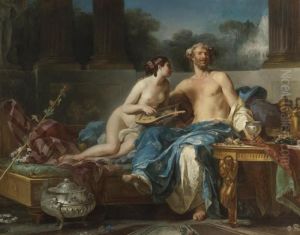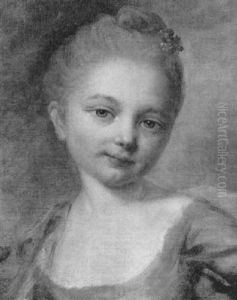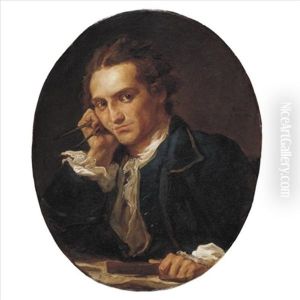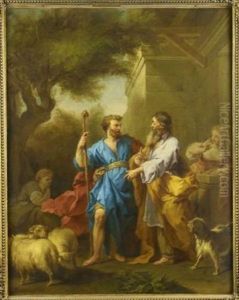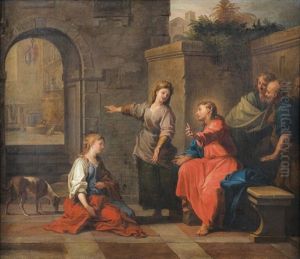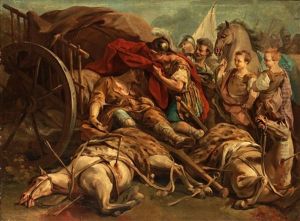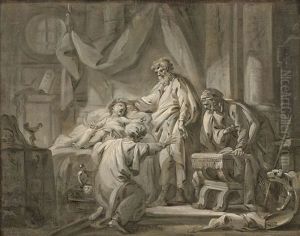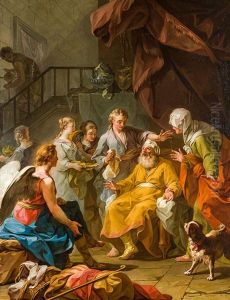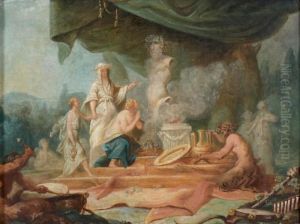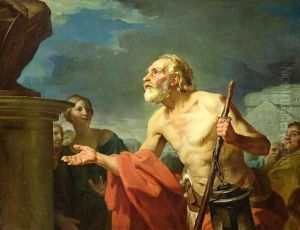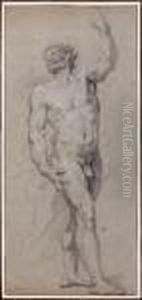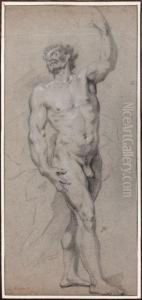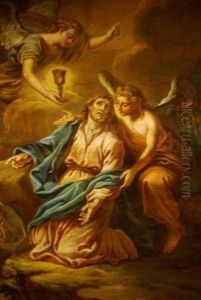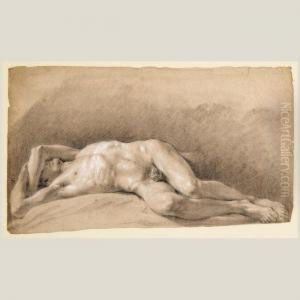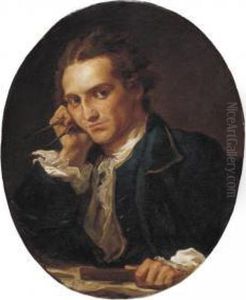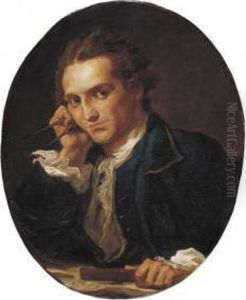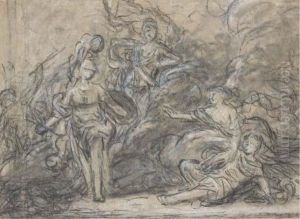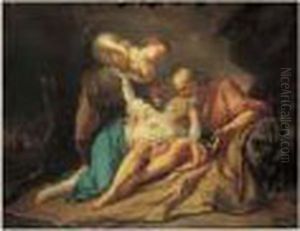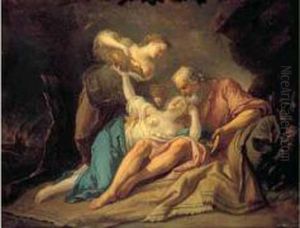Jean Bernard Restout Paintings
Jean Bernard Restout, born on March 25, 1732, in Paris, France, was a distinguished French painter, emblematic of the Rococo and early Neoclassical periods. He hailed from a prominent family of artists that had significantly impacted French art for generations, making him the scion of a notable artistic dynasty. His father, Jean II Restout, was also a celebrated painter, ensuring Jean Bernard's immersion in the world of art from a very young age.
Jean Bernard Restout's education in art was both rigorous and privileged, under the tutelage of his uncle, Jean-Baptiste Restout, and later, at the prestigious Académie Royale de Peinture et de Sculpture. His natural talent and the influence of his illustrious family lineage quickly propelled him into the limelight of the French art scene. In 1758, he achieved considerable recognition by winning the Prix de Rome, a prestigious scholarship for art students to study in Rome, Italy. This accolade afforded him the opportunity to study the masterpieces of the Renaissance and the burgeoning Neoclassical style, which were to have a profound influence on his later works.
Restout's time in Rome was transformative, enriching his artistic vocabulary and honing his skills in depicting both the human form and dramatic, historical scenes. Upon his return to France, he became an active member of the Académie Royale, contributing to its exhibitions and gaining fame for his religious and mythological scenes, characterized by their dynamic compositions and emotional depth.
Despite his success, Restout's career was not without its challenges. The changing tastes of the art world, with the rise of Neoclassicism challenging the Rococo style's frivolity, demanded adaptability and innovation from artists. Restout navigated these shifts by integrating the clarity and simplicity of Neoclassicism with his Rococo roots, creating works that were both elegant and emotionally resonant.
Jean Bernard Restout's contributions to French art were considerable, with his works being commissioned for some of France's most significant religious and public buildings. However, the French Revolution brought about dramatic changes to the country's cultural landscape, affecting artists and their patronage. Restout's later years were marked by these upheavals, and he passed away on January 1, 1797, in Paris. His legacy, however, endures in the beauty and historical significance of his paintings, which continue to be admired for their blend of emotional depth and artistic finesse.
